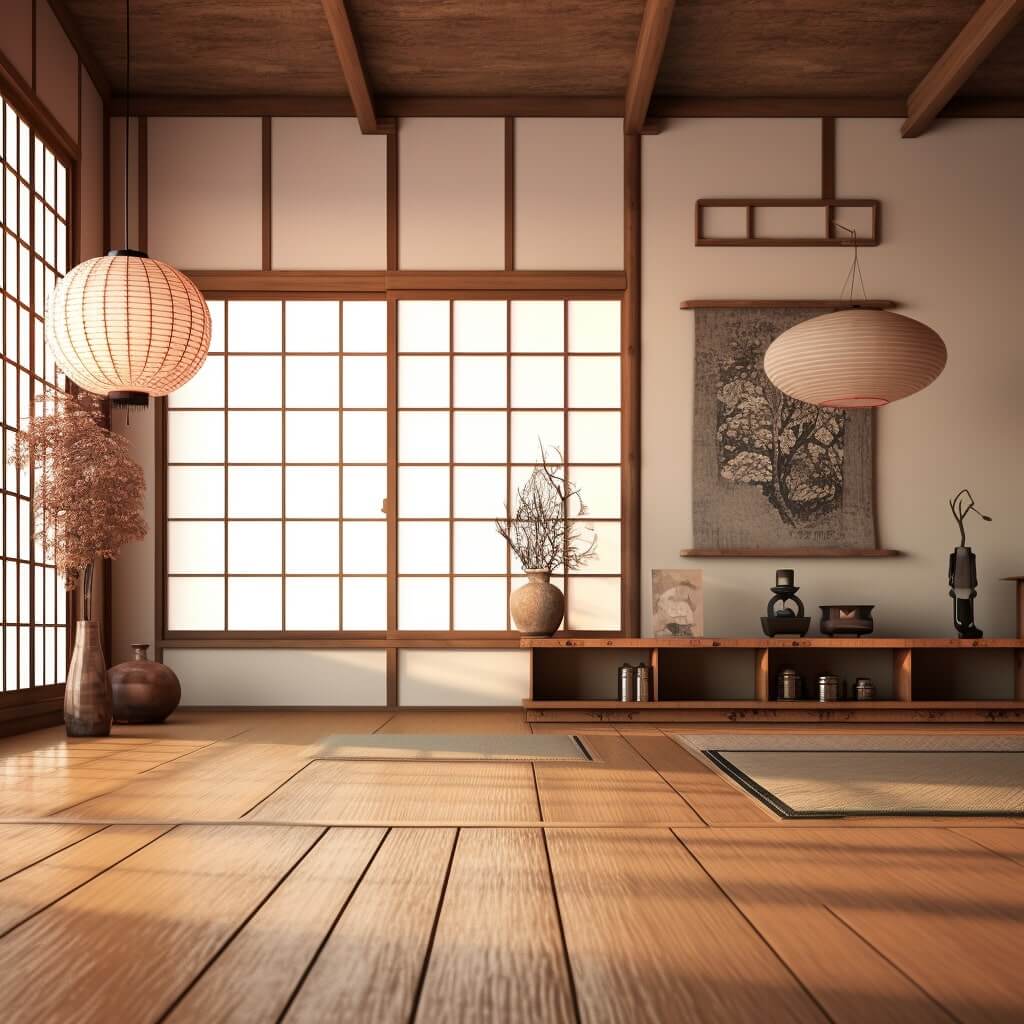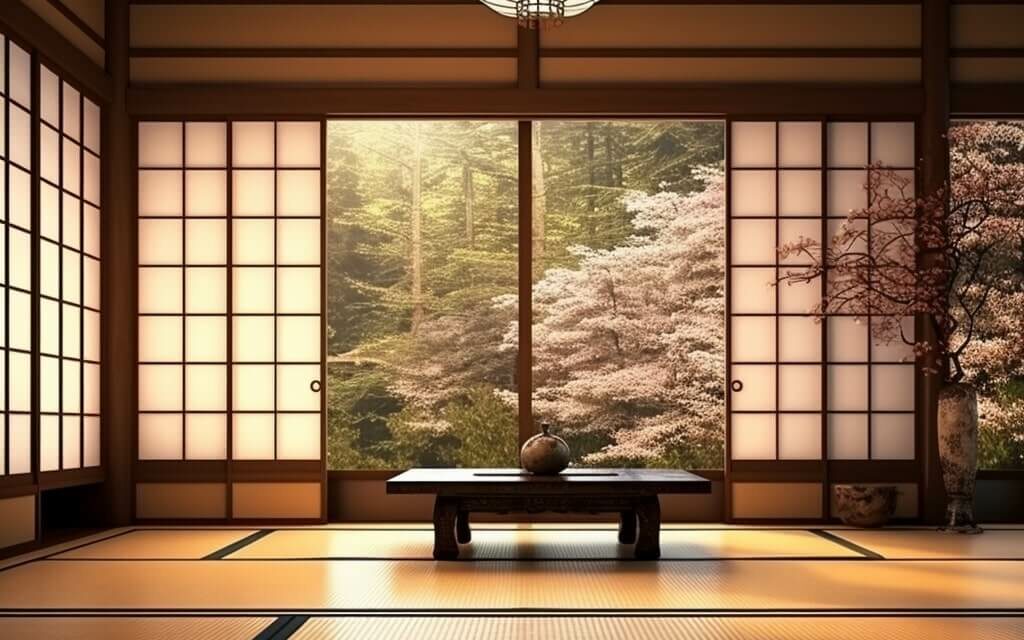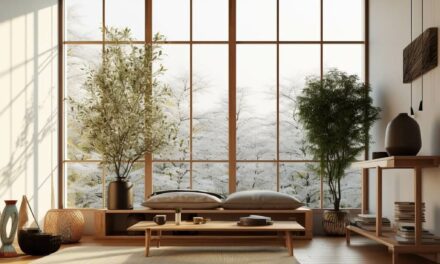Japanese interior design elegantly melds form and function through its unique sensibilities.
Key takeaways include:
- Natural materials and organic shapes create harmony with nature
- Principles like asymmetry and imperfection add character
- Minimalist design, negative space, and concealment reduce visual clutter
- Influences ranging from Zen Buddhism to modernism shaped the aesthetic
- Screens, windows, and verandas blur indoor/outdoor boundaries
- Green accents and views onto nature bring the outside in
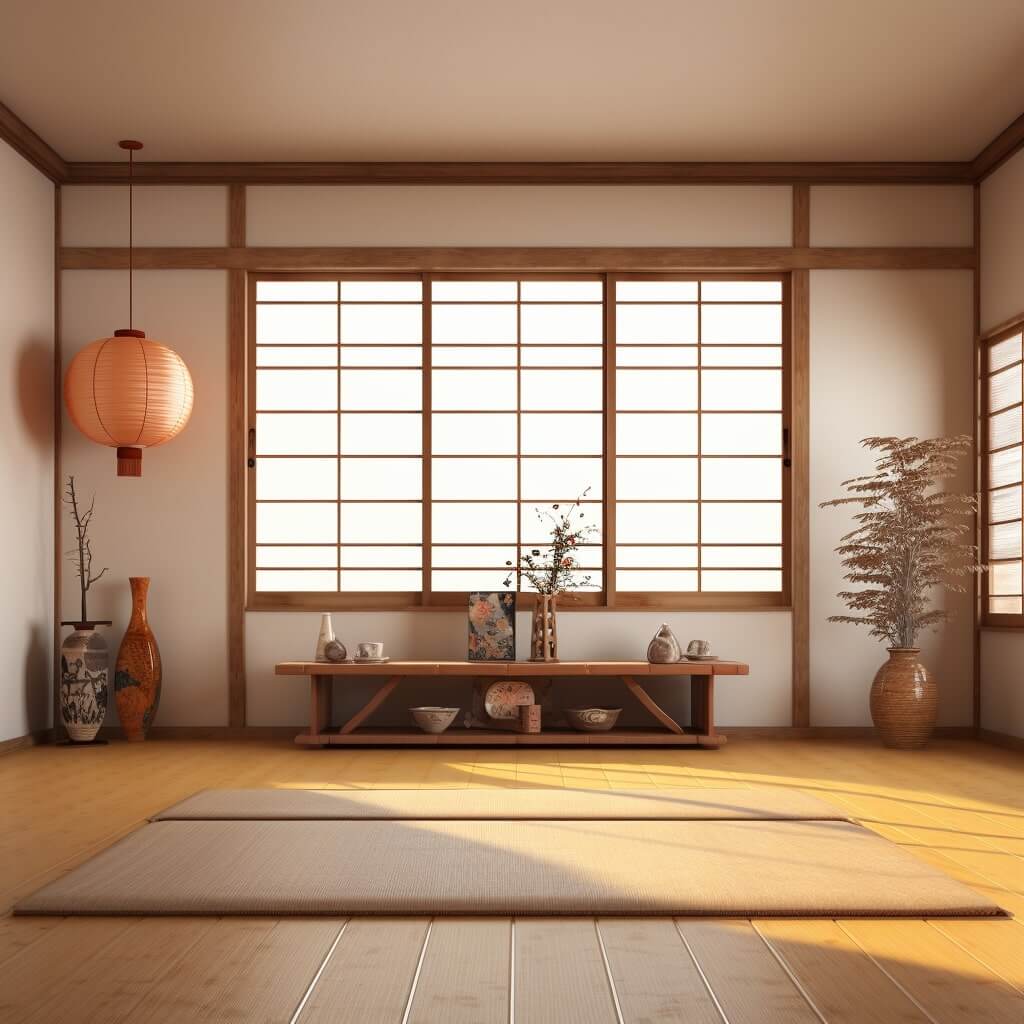
While challenging for the uninitiated, embracing Japanese interior design perspectives can greatly enrich interior spaces. Patience and an open mind to different definitions of beauty are key.
The Japanese talent for fusing simplicity and purpose remains inspiring. A Japanese design collaboration or adding subtle touches of its wisdom to any space promises to instill tranquil joy.
If the unique minimalism of Japanese style resonates with you, then hopefully this guide provided some starting points to weave its essence into your own interiors. The interplay of craft, ritual, and nature can introduce a profoundly zen sensibility – one that calmly nourishes mind, body and spirit.
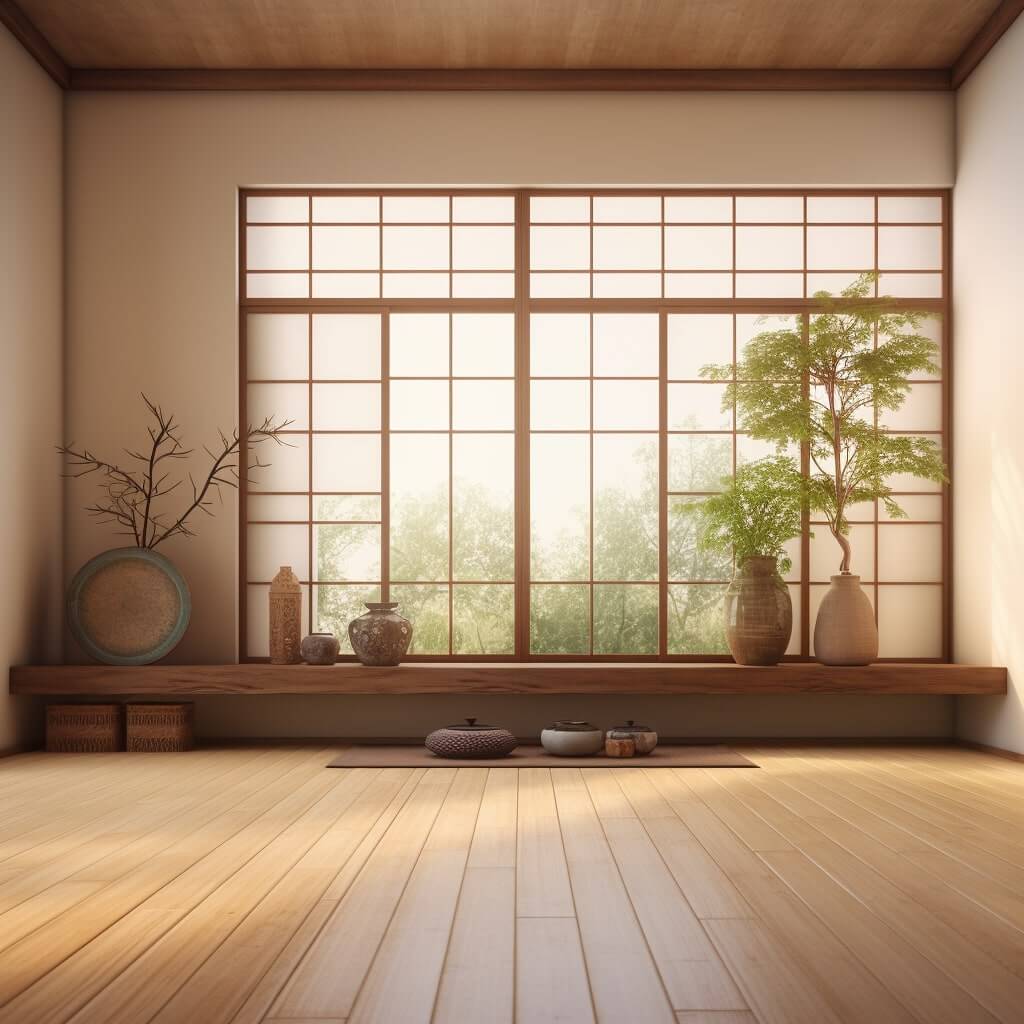
History and Origins of Japanese Interior Design
Japanese interior design design has a long and storied history, with principles and aesthetics that have evolved over centuries yet still influence interior spaces today. To understand the Japanese approach to interior design, it’s helpful to learn about some of the core philosophies and cultural influences that shaped its development.
Traditional Japanese Design Principles
Some of the key principles that characterize traditional Japanese design include:
- Minimalism – Eliminating clutter and non-essentials to create serene, contemplative spaces. This helps focus attention.
- Natural materials – Using raw, unfinished or minimally processed materials like wood, paper, bamboo and textiles. This connects to nature.
- Asymmetry – Intentionally avoiding symmetry to seem more organic and close to nature.
- Impermanence – Designing with impermanent natural materials to embrace the Buddhist concept of transience.
- Multi-purpose design – Creating flexible spaces and features that can serve different functions depending on need.
The Japanese aesthetic values simplicity, tranquility, and bringing the natural world into the home. Traditional homes embody these ideals through clean lines, neutral colors, and organic shapes and textures.
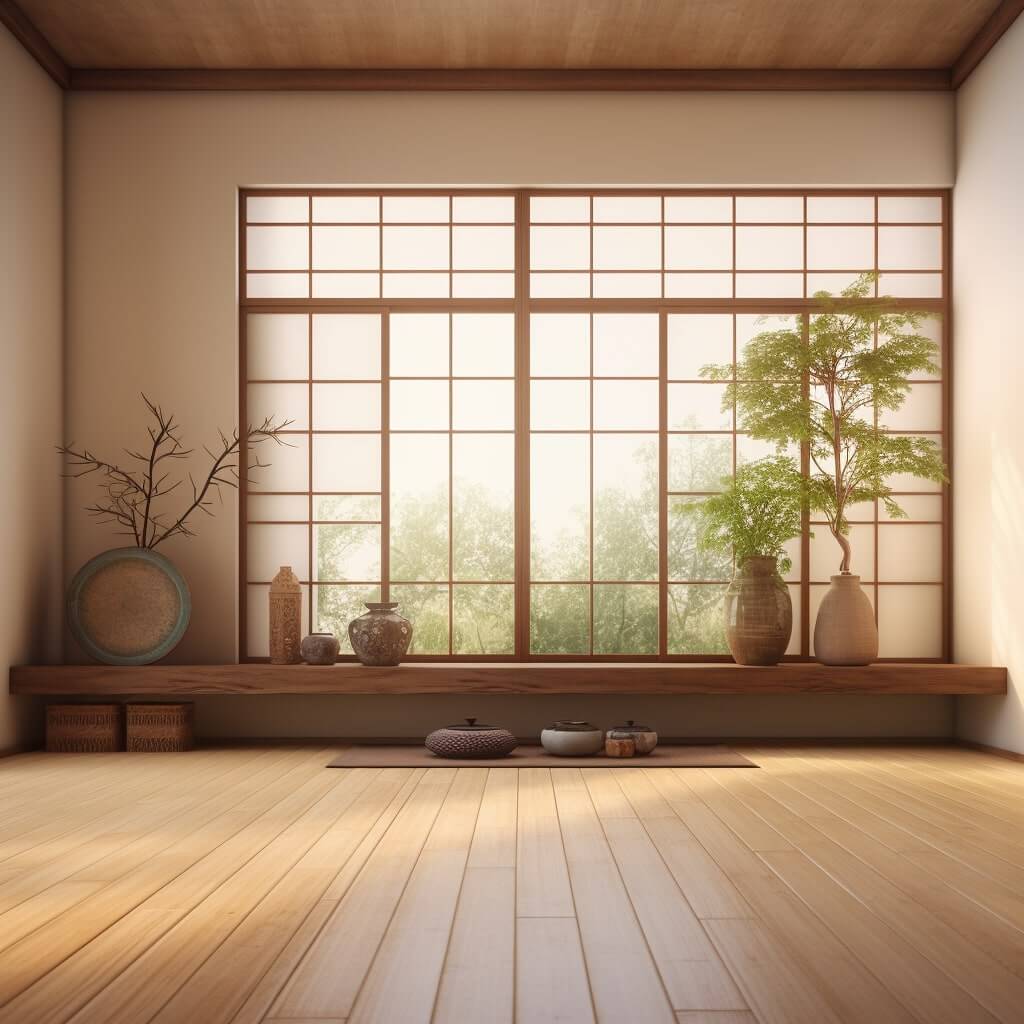
Influence of Zen Buddhism
As Zen Buddhism spread in Japan around the 12th century, it had a major impact on art, architecture, and the design of spaces. The Zen emphasis on meditation, contemplation, and harmony with nature aligned well with existing Japanese interior design principles like impermanence and simplicity.
Some key Zen influences include:
- Natural, unadorned materials and surfaces
- Clean lines and visual simplicity
- Asymmetric, “imperfect” designs
- Earthy colors like brown, gray, green and black
- Incorporating gardens, plants, water and natural light
Zen helped reinforce a pared-down, meditative aesthetic still seen in Japanese interiors today.
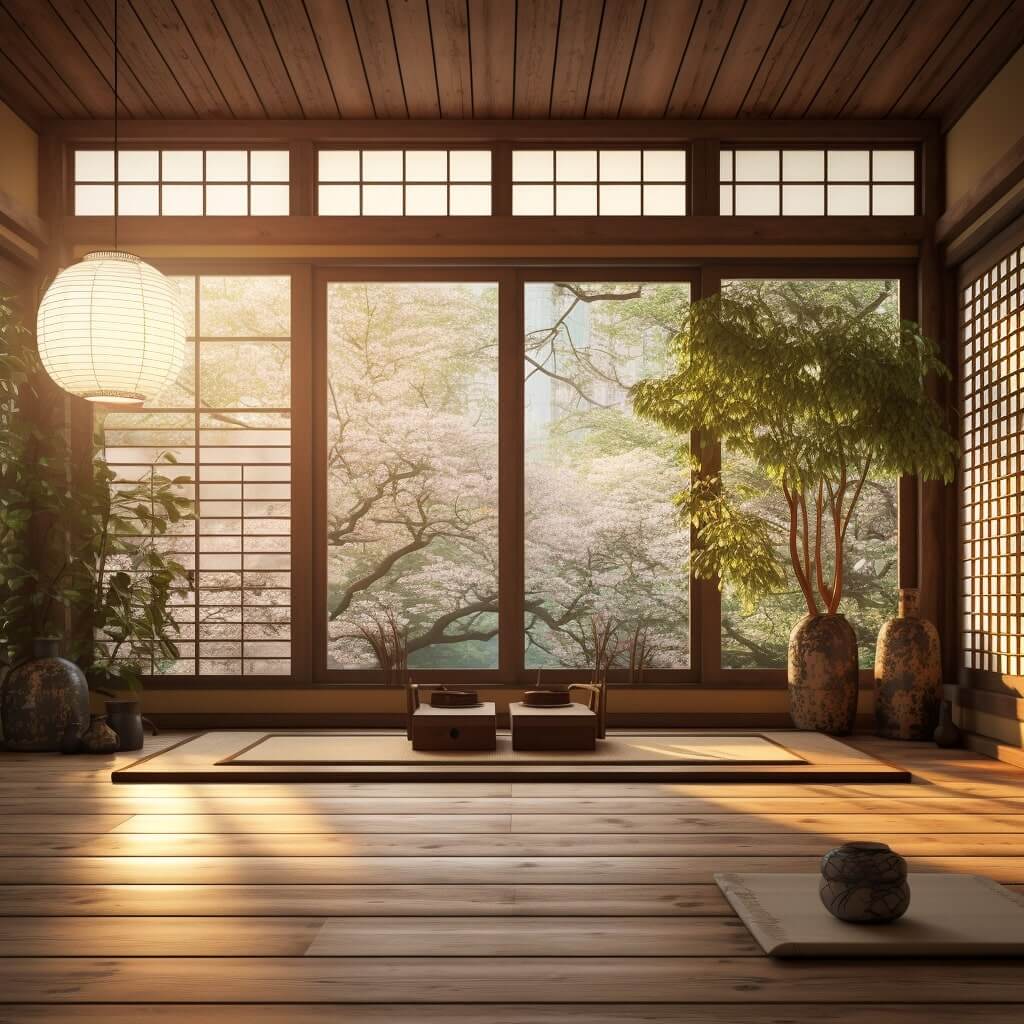
Shintoism and Reverence for Nature
Shinto, Japan’s indigenous religion, also helped shape the Japanese affinity for nature in interior design. Shinto teaches that gods and spirits live in natural phenomena like mountains, trees, and rivers.
This reverence for nature led to practices like:
- Orienting buildings to capture auspicious views
- Designing spaces to frame vistas of gardens, outdoor landscaping, or even faraway mountain peaks
- Using natural materials to forge a connection with the natural realm
- Incorporating living elements like flower arrangements and potted plants
This unique worldview contributed to the Japanese sensibility of seamlessly integrating interior and exterior through designs that artfully bring the outside in.
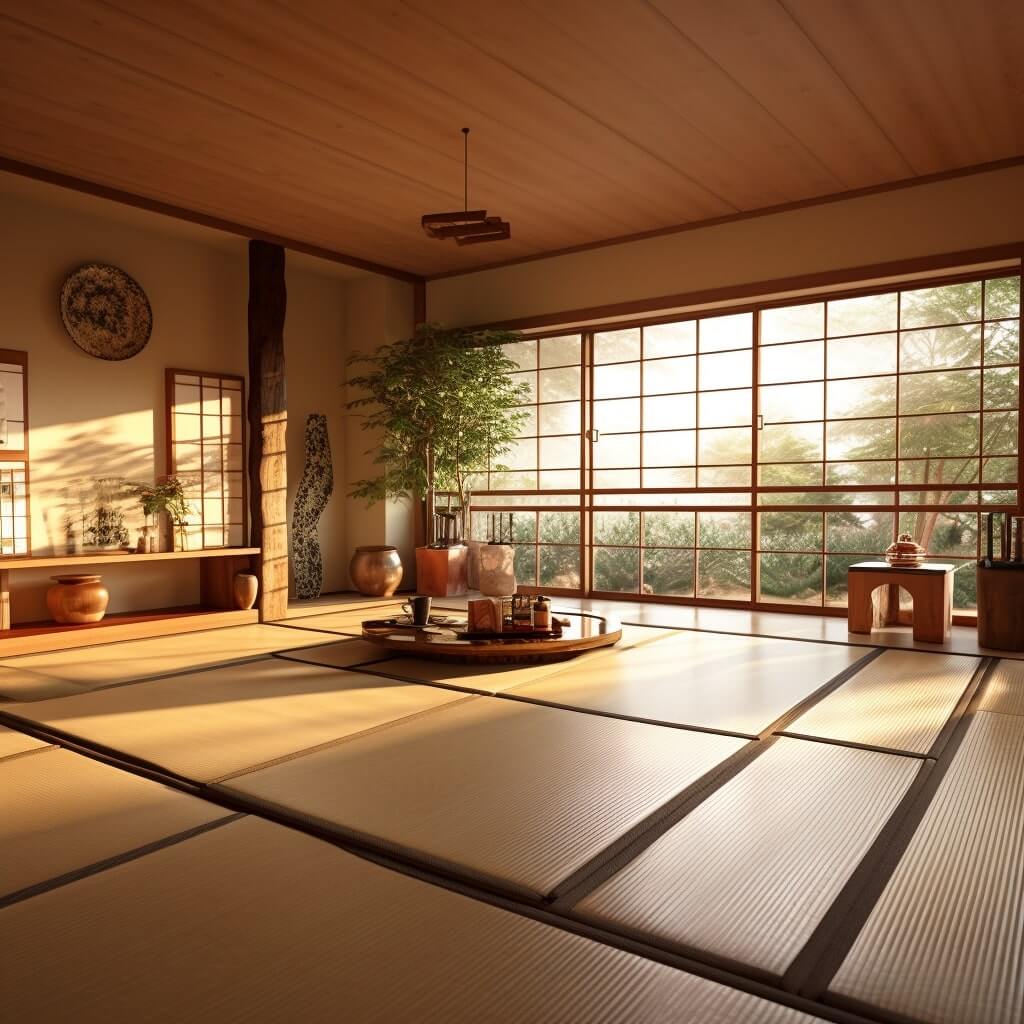
Key Elements and Features
Beyond the philosophical underpinnings, Japanese interior design is characterized by some specific elements and compositional techniques. These signature details create spaces that feel distinctly Japanese.
Minimalism
As mentioned earlier, minimizing clutter and non-essential items is key. This allows what remains to take focus and have greater impact.
Some tips for achieving minimalism:
- Stick to 1-2 colors in a single room
- Avoid over-decorating walls and flat surfaces
- Conceal storage to keep necessities out of sight
- Display only a curated selection of decorative objects
- Use multifunctional furniture to reduce pieces needed
Effective minimalism is about restraint and purpose, not complete emptiness.
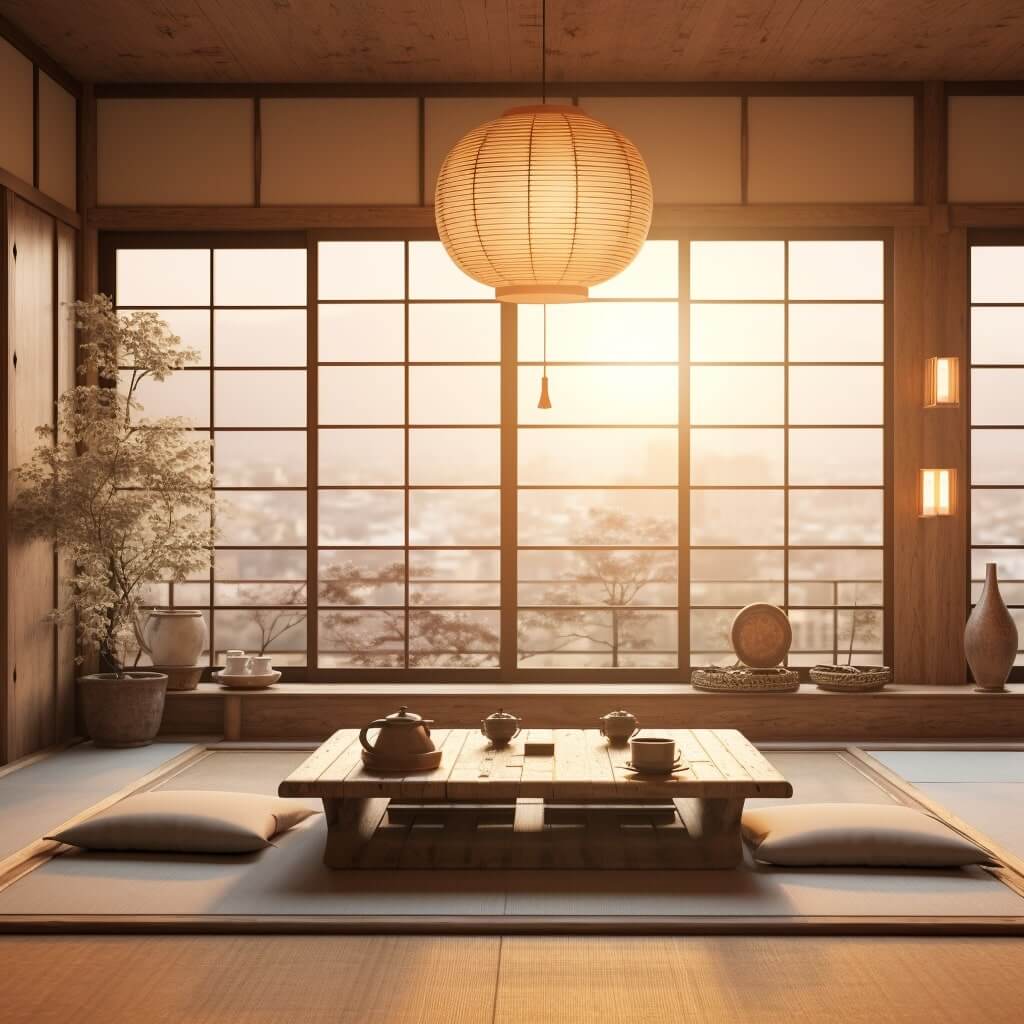
Natural Materials
Natural, unprocessed materials create a peaceful ambiance and sense of harmony with nature. These are some commonly used options:
- Wood – Teak, cypress, cedar, pine. Often left unfinished.
- Paper – For shoji screens, lamp shades, wall art. Washi paper is handmade with natural fibers.
- Bamboo – Used for floor mats, window shades, baskets.
- Rattan & water reed – In seating, wall decor, lighting.
- Textiles – Linen, cotton, silk. Natural dyes.
- Clay – For pottery accents and flower vases.
The idea is to create a contrast, while also letting the essence of the materials shine.
Flexible Room Dividers
Shoji screens and fusuma sliding panels allow spaces to be reconfigured. They diffuse light beautifully while delineating spaces with a light touch.
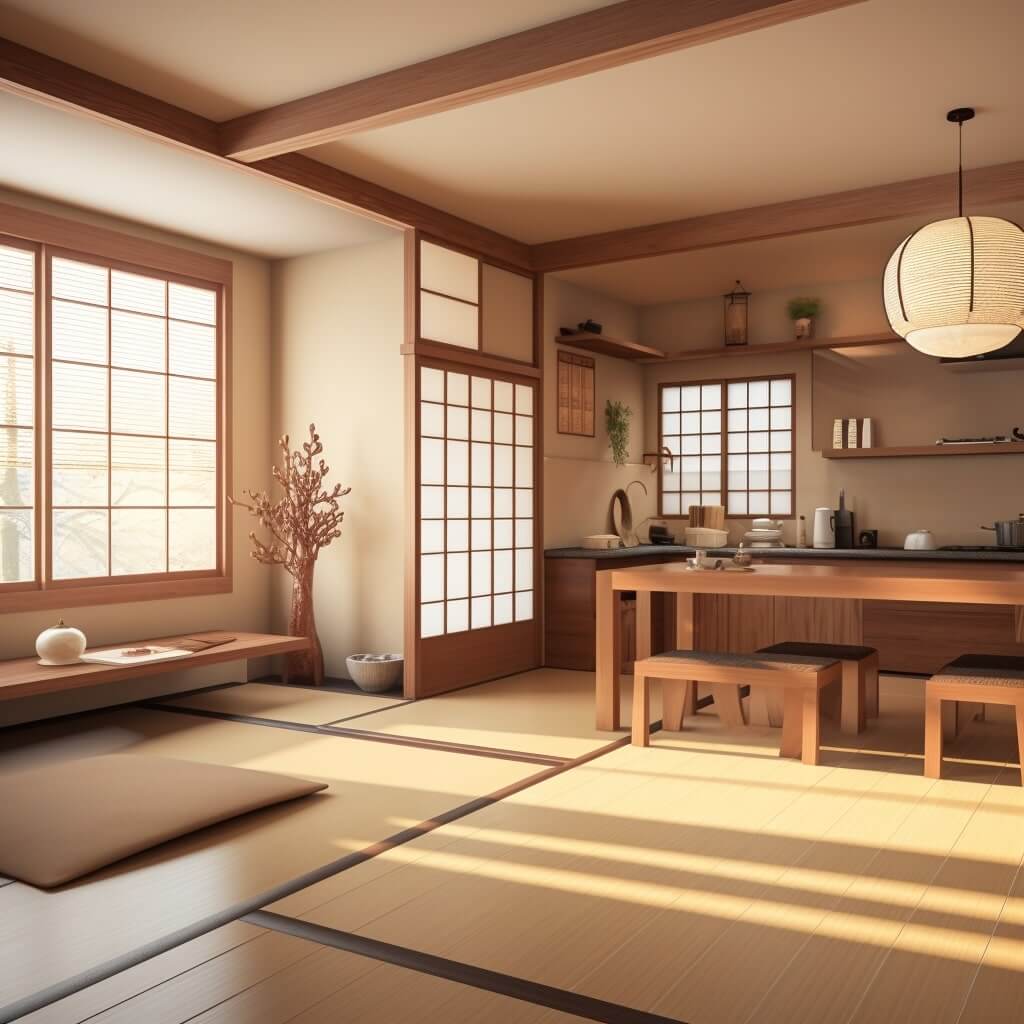
Influential Styles and Periods
While Japanese interior design has common threads, it has evolved over centuries through different eras and influences. Here are some of the major styles and periods that shaped the aesthetics we see today:
Shoin-zukuri Style (16th-19th Century)
This style emerged during the Azuchi-Momoyama and early Edo periods. Some defining features:
- Small, minimalist tearooms for tea ceremonies
- Chest-height shelving and window alcoves (tokonoma) to display art
- Natural wood pillars, screens, and wall panels
- Sliding fusuma doors with translucent shoji screens
- Tatami woven mat floors
Shoin-zukuri established the model for Japanese domestic spaces. Its principles guide layout and functionality even in modern homes.
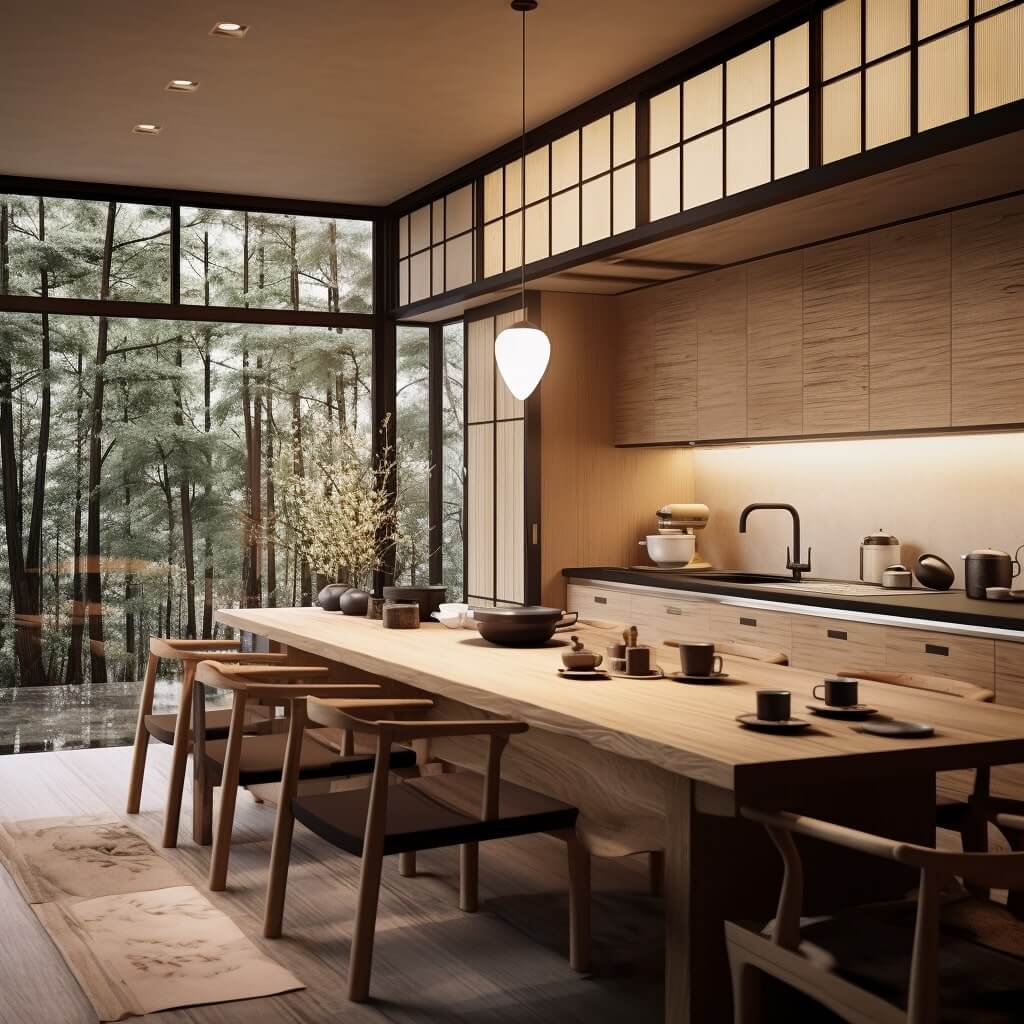
Sukiya-zukuri Style (16th-19th Century)
Sukiya architecture drew inspiration from rustic teahouse aesthetics:
- Unpainted wooden columns and beams
- Thatched reed roofs
- Sliding shōji doors and windows
- Verandas blending indoor and outdoor space
- Imperfect, asymmetrical designs
It created residences harmonizing with nature through organic forms and materials. This influenced later Japanese interior design particularly.
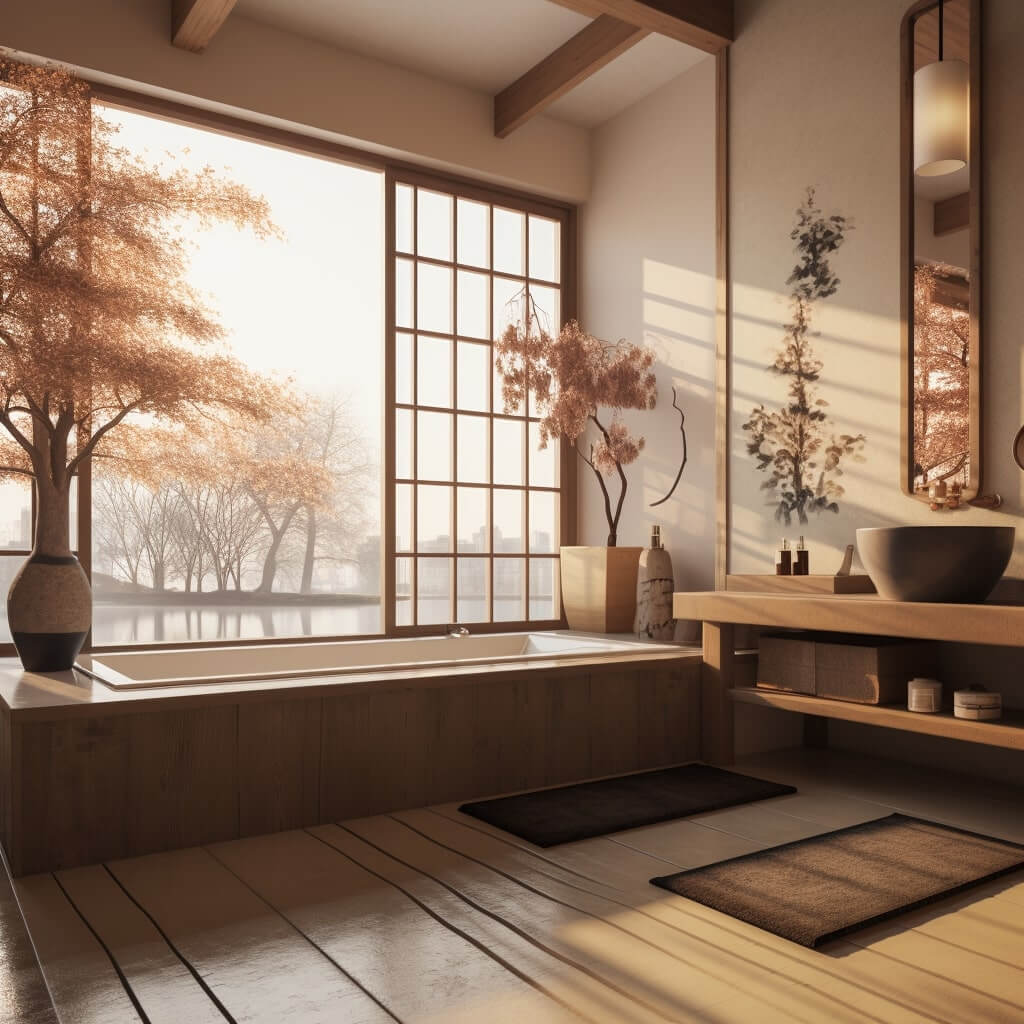
Modern Japanese Style (Post 1950s)
Post-WWII, Japanese architects blended traditional elements with modern minimalism:
- Clean lines and geometric forms
- Indoor/outdoor flow via glass walls and skylights
- Concrete, steel, brick – industrial modern materials
- Spare, uncluttered spaces
- Nature views and courtyards
This seamless fusion of old and new defines contemporary Japanese interiors. Traditional principles adapt to modernist forms and functions.
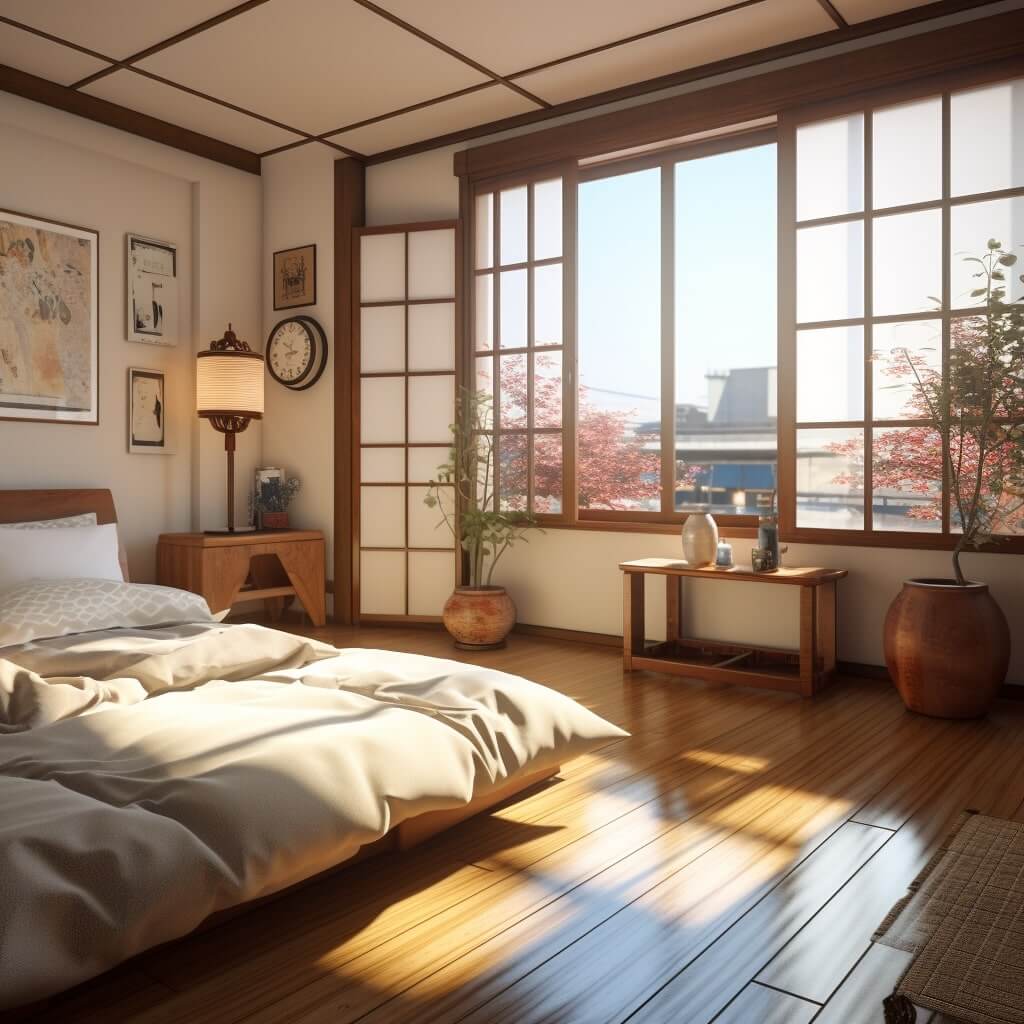
Creating a Japanese-Inspired Home
If you want to incorporate Japanese interior design into your own home, here are some ideas for where to start:
Use Natural Materials
As discussed earlier, natural materials are integral to Japanese design. Incorporate wood, paper, textiles, bamboo and other organic elements wherever possible. Some specific ways:
- Hardwood or bamboo flooring
- Wood paneling on walls (even just as an accent)
- Shoji or bamboo screens to divide space
- Natural fiber rugs (jute, sisal)
- Linen, cotton or silk textiles
This instantly creates a more organic, zen sensibility.
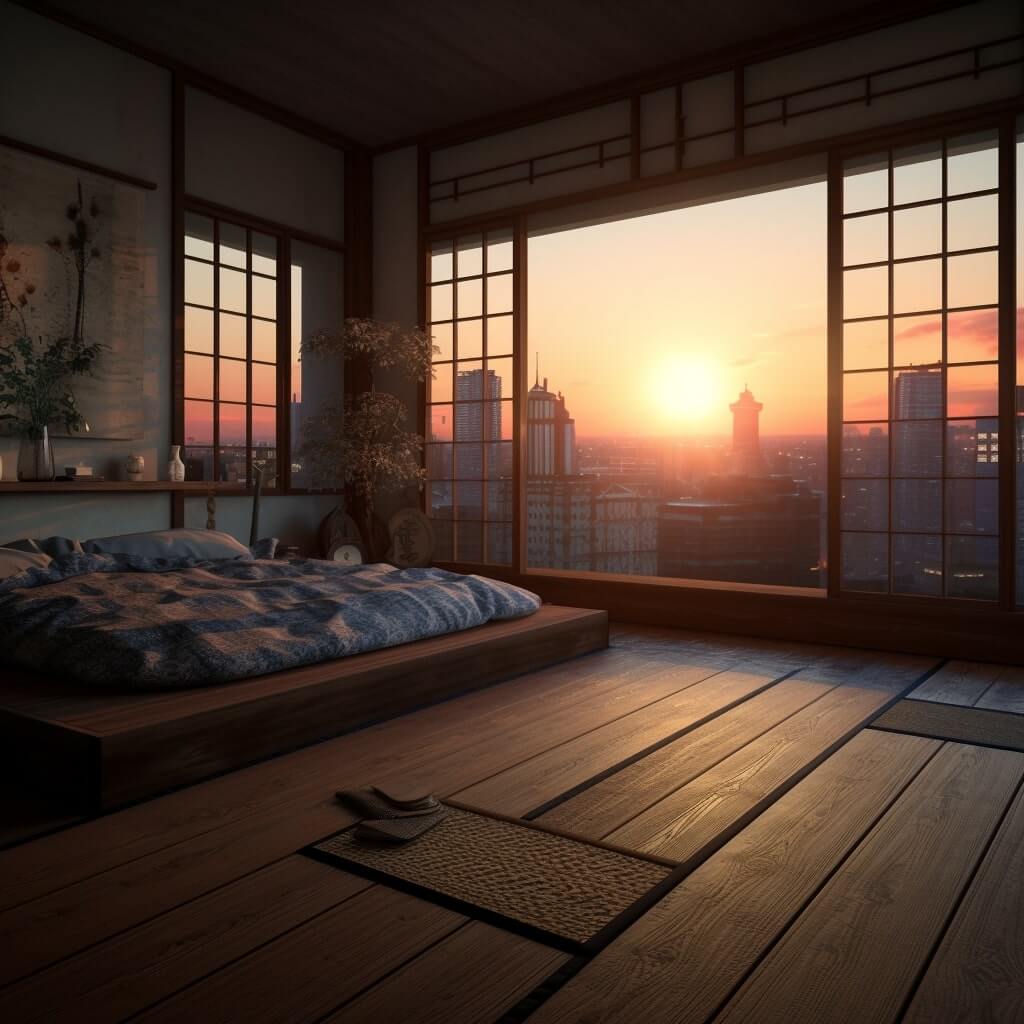
Incorporate Greenery
Japanese spaces seamlessly integrate interior and exterior. Bring nature in by:
- Placing flower arrangements in tokonoma alcoves
- Using potted plants like bonsai trees and succulents
- Putting vases of branches and dried flowers around
- Displaying ikebana floral arrangements
- Setting up an indoor rock garden with raked sand or pebbles
Creating these natural touches can make a space feel tranquil and meditative.
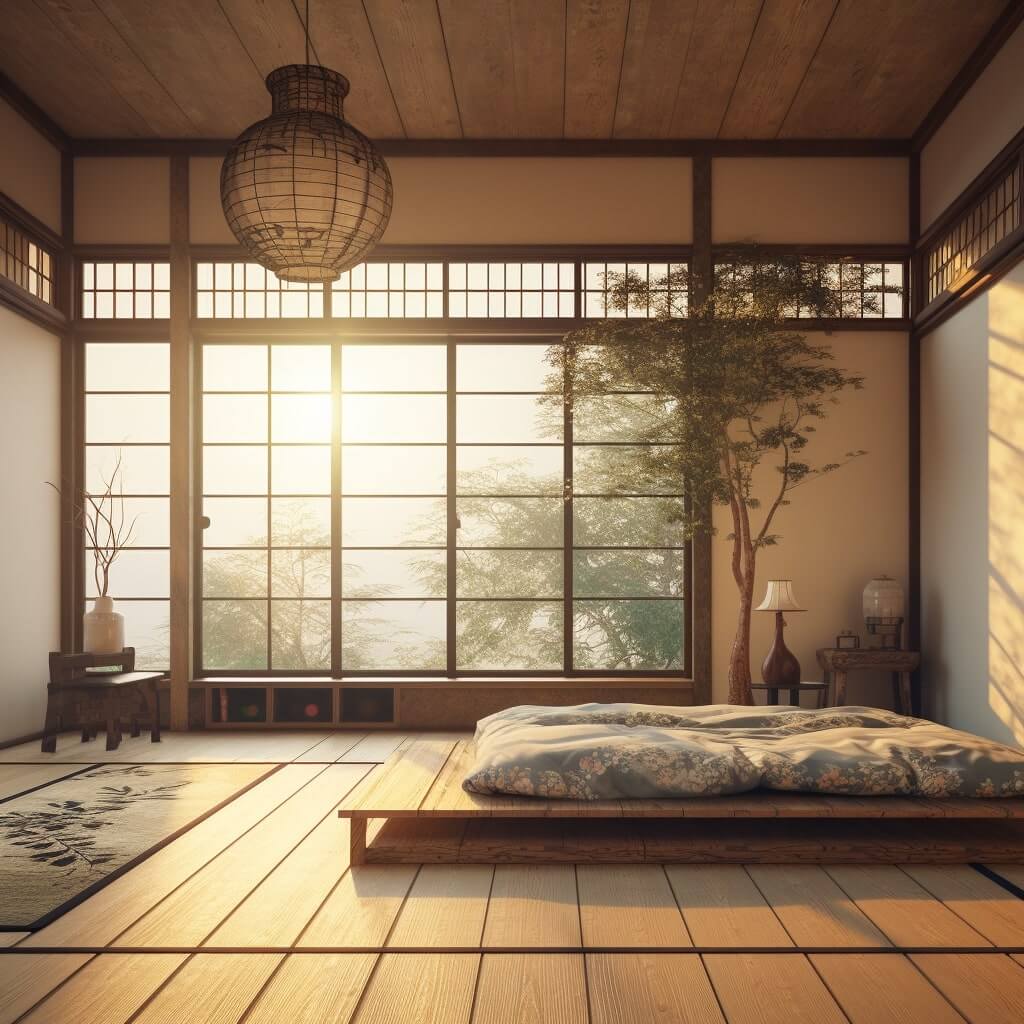
Add Subtle Asian Accents
While you don’t want to overly theme a space, a few subtle Asian touches can reinforce the Japanese feeling. Some accent ideas:
- Hanging scroll wall art with kanji/calligraphy
- Using porcelain, ceramic or iron teaware
- Bamboo, paper or silk lampshades
- Low dining tables (chabudai)
- Zabuton floor cushions
- Ukiyo-e woodblock prints
A touch of restraint goes a long way. You want accents to enhance, not overwhelm the clean Japanese interior design aesthetic.
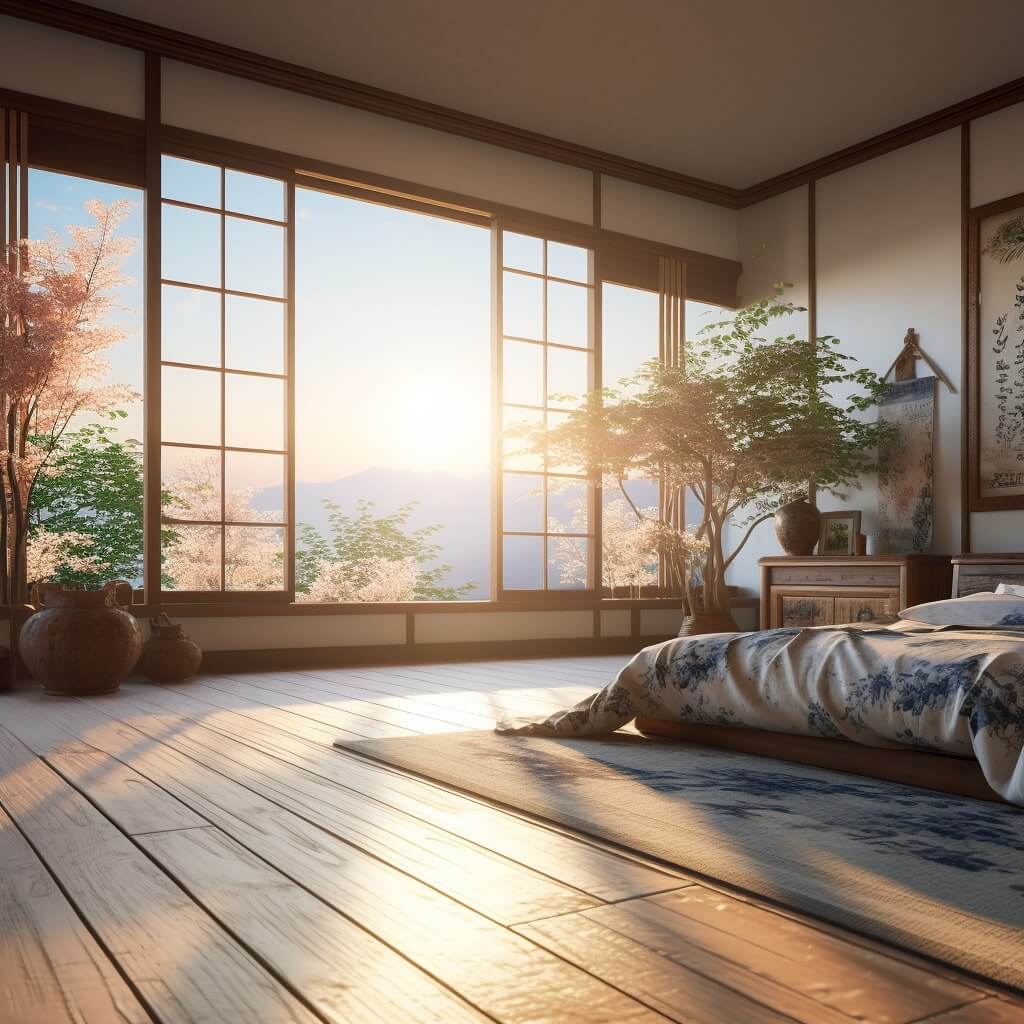
Working with Japanese Designers
To fully realize an authentic Japanese interior design, it can be invaluable to collaborate with designers from Japan who intrinsically understand the cultural approach. Here are some tips for maximizing this partnership:
Understanding Their Philosophy
Recognize that Japanese designers are guided by a different set of principles than Western counterparts. Be open to unconventional perspectives on:
- Asymmetry and irregularity
- Celebrating imperfections and wear
- Eliminating the superficial
- Focusing on materials and textures over ornamentation
- Mindfulness of proportions and negative space
Giving creative freedom can lead to beautiful, unconventional outcomes.
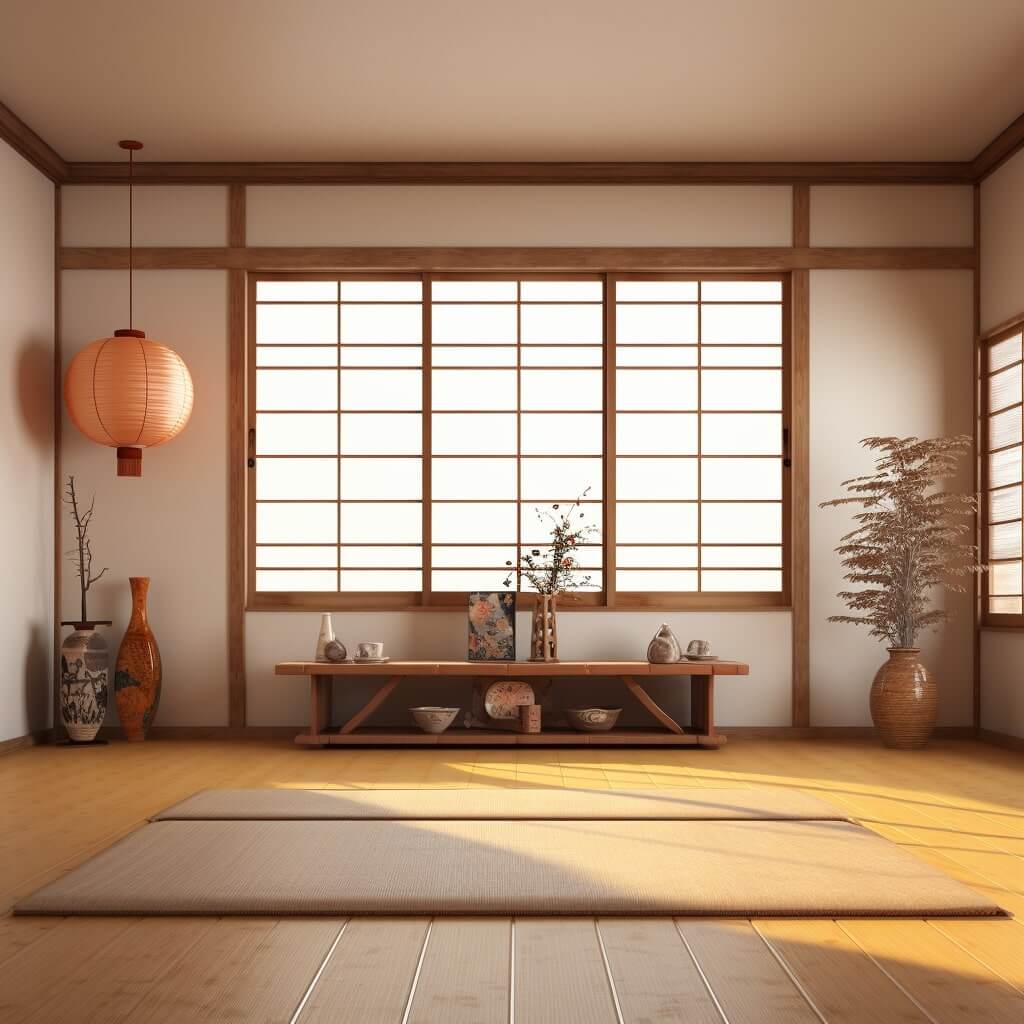
Communication and Project Management
Clear communication is key across language and cultural barriers. Strategies include:
- Using visual references to articulate aesthetic goals
- Asking questions to confirm understanding
- Checking in frequently to ensure alignment
- Being extremely detailed in written documents
- Allowing extra time for back-and-forth dialogue
Mutual clarity prevents missteps.
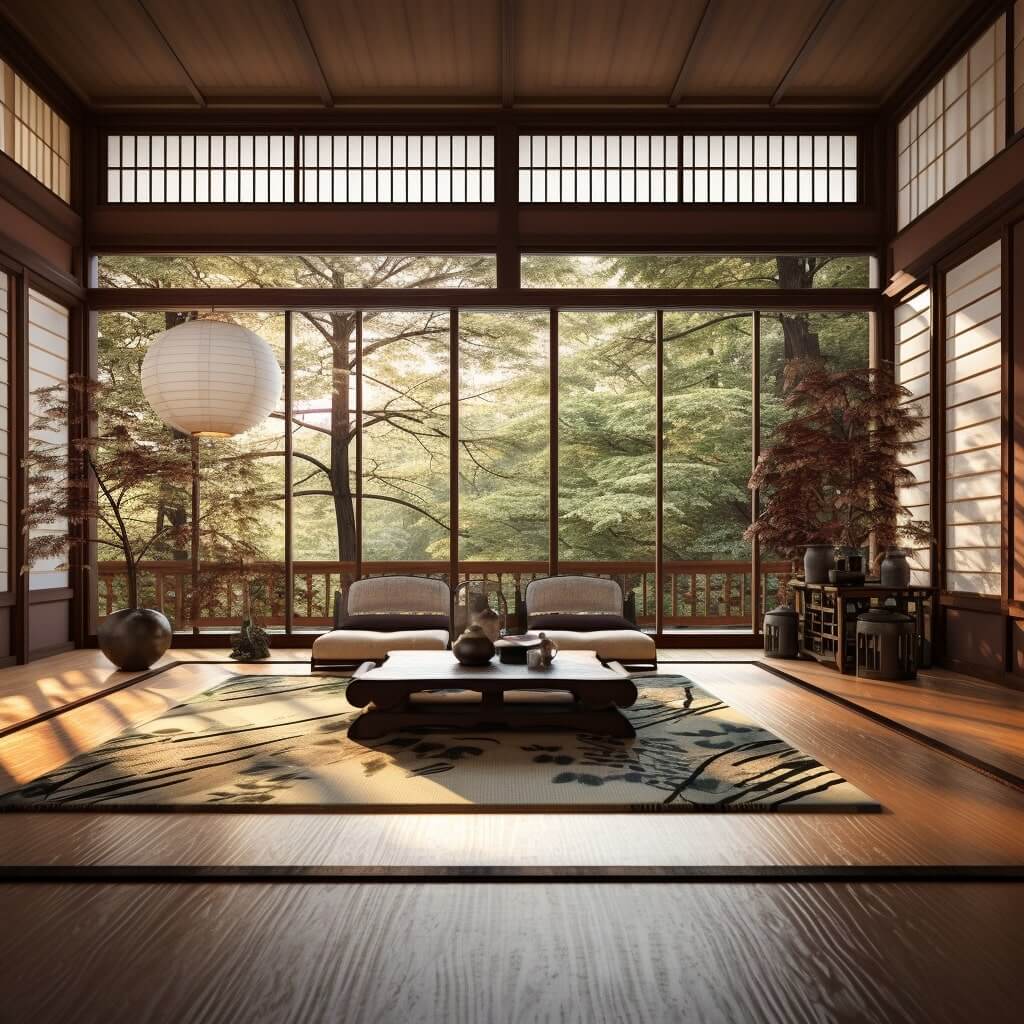
Finding Designers
Sources for connecting with Japanese design talent:
- Design firms based in Japan
- Local designers from Japanese heritage
- Online freelancing platforms
- Design schools placing interns abroad
- Creative agencies with Japan specialists
- Traveling there to discover emerging talent
The right partner can infuse a space with authentic Japanese style and sensibilities.
Leveraging Japanese expertise while respecting ingrained traditions can lead to enriching design collaborations. The attention to detail and refined minimalism can introduce a beautiful new perspective.
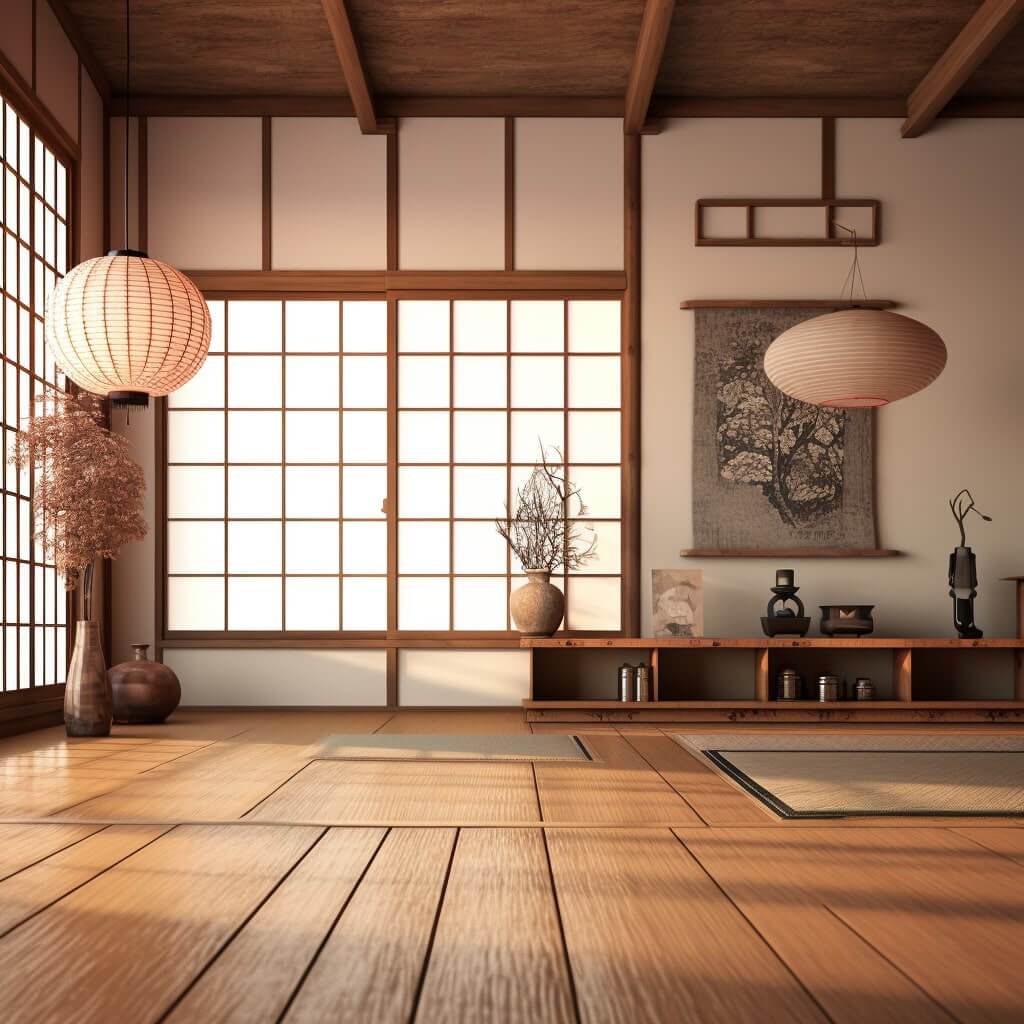
Sourcing Japanese Furniture and Decor
To complete the look, you’ll want authentic Japanese furniture and decor elements. Here are some avenues to find quality pieces:
Antique Stores
Vintage Japanese furniture has patina and character. Try antique shops and sellers specializing in Asian artifacts. Mid-century Japanese antiques are particularly prized.
Online Retailers
Etsy and sites like Japangeles offer curated Japanese goods. On Etsy, search tags like “Japanese decor,” “shoji screens,” or “Japanese textiles” to find vendors.
eBay also has Japanese antiques and crafts. Review seller reputations.
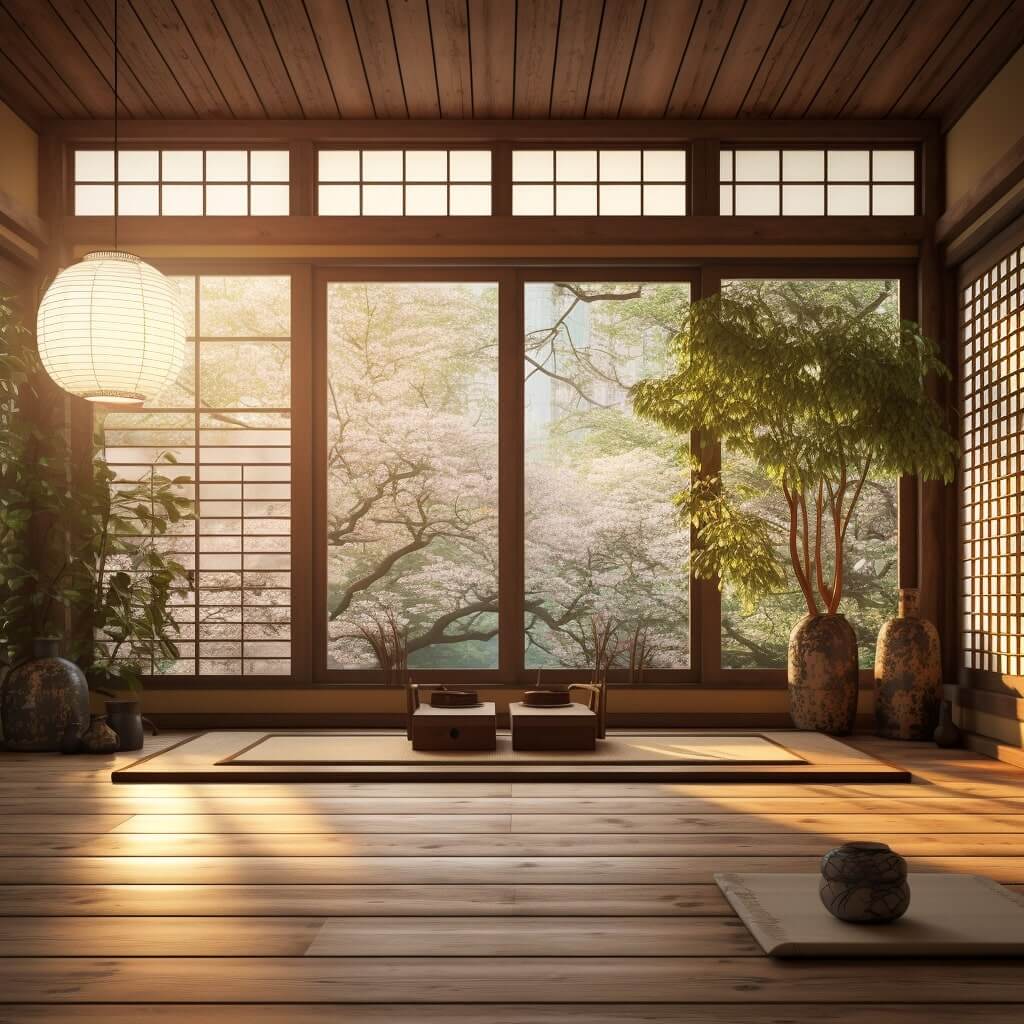
Direct from Japan
For high-end and custom pieces, consider sourcing directly from Japanese designers and woodcraft studios. Expect to pay for meticulous workmanship.
Ways to find sources:
- Enlist a buying agent or proxy service in Japan to purchase items or commission bespoke designs. They negotiate and handle shipping.
- Visit Japan to hand select pieces like tatami mats, ceramics, and temple wood carvings.
- Check galleries and concept stores in Japanese design districts.
With diligent searching, you can acquire quality Japanese elements to integrate into contemporary homes.
The influence of Japanese design on the Japandi design trend
An interior design style that has been growing in popularity recently is Japandi – a fusion of Japanese and Scandinavian aesthetics.
Japandi mixes the minimalism and natural materials of Japanese design with the functionality and simplicity of Scandinavian style.
From Japan, it embraces imperfection, asymmetric lines, organic textures and connection to nature.
From Scandinavia, it takes light wood tones and neutral color palette, clean shapes, and airy negative space.
The Japandi look harmoniously blends these aspects to create tranquil, balanced spaces that feel both fresh and grounded.
Japandi is an example of how the core principles of Japanese design, from materiality to introspective zen, have resonated across borders and influenced the emergence of new hybrid styles.
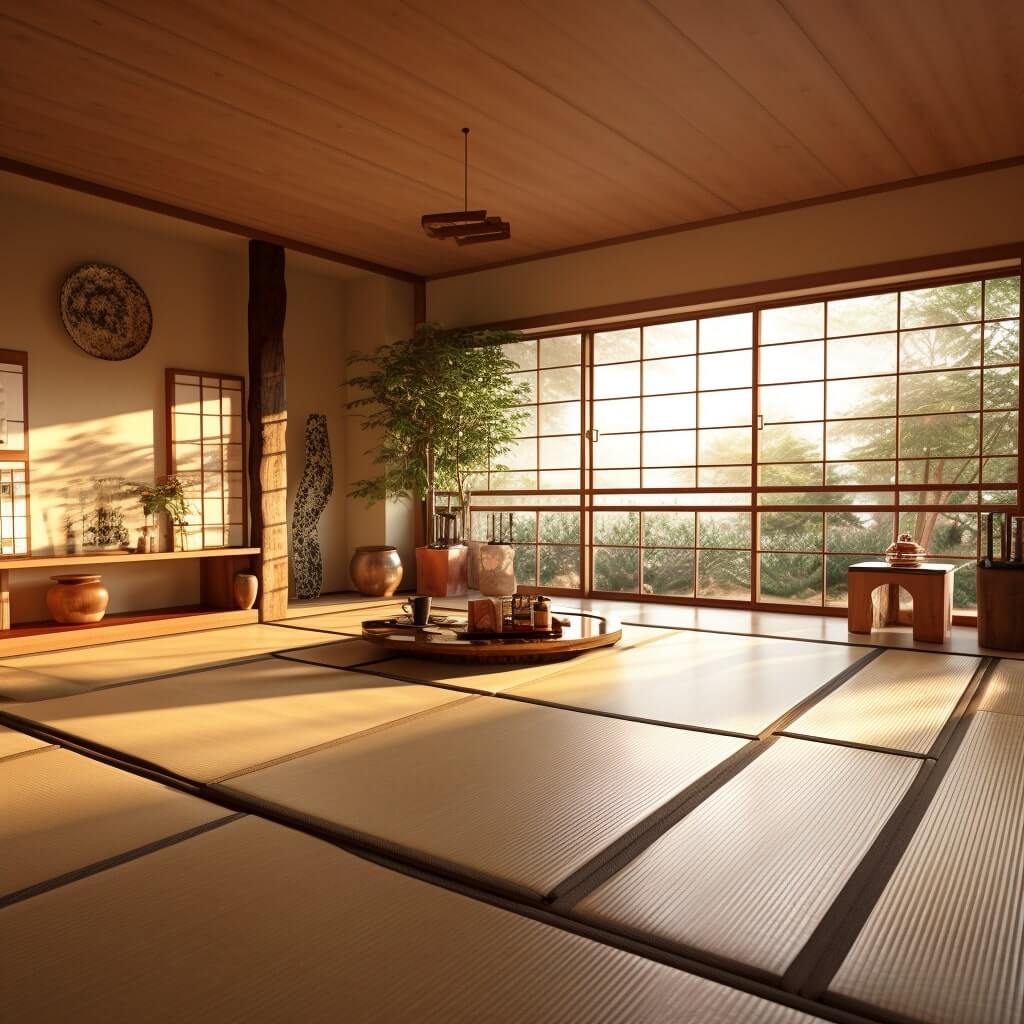
FAQs
What are the key features of Japanese interior design?
The key features of Japanese interior design are minimalism, natural materials, asymmetry, multi-purpose spaces, indoor/outdoor flow via screens and windows.
What is wabi-sabi style?
Wbai-sabi style is a Japanese aesthetic centered on transience, imperfection, simplicity, and acceptance of natural change. Celebrates imperfections and organic, worn materials.
How can I add a Japanese influence to my home?
Use natural materials, incorporate greenery, add subtle accents like bamboo screens or calligraphy art, and create flexible spaces using low furniture.
What historical periods influenced Japanese design?
Shoin-zukuri style from the 16th-19th century formalized layout and spaces. Sukiya-zukuri drew from rustic teahouses. Post-WWII blended traditional style with modern minimalism.
Where can I buy Japanese furniture and decor?
Antique stores, online retailers like Etsy and Japangeles, direct from Japan via buying agents or by visiting galleries and stores while traveling there.
What is Japanese interior design called?
Washitsu – meaning Japanese-style room. Key elements are tatami floors, shoji screens, and simplicity.
What is modern Japanese interior design called?
Contemporary Japanese or modern Zen, blending minimalism and natural materials with sleek, modern aesthetics.
What is the Japanese theory of interior design?
Wabi-sabi – finding beauty in imperfection, simplicity, and transience. Bringing natural harmony into spaces.
What are the features of Japanese interior design?
Natural materials, clean lines, asymmetry, indoor-outdoor connection, multi-purpose furniture, zen minimalism.
What are the basics of Japanese design?
Minimalism, natural elements, flexibility, subtlety, embrace of empty space, seamless flow between interior and exterior.
How to decorate your room Japanese style?
Use shoji screens, low furniture, natural materials, greenery, art like calligraphy or ukiyo-e prints, and zen, earthy color schemes.
Why do Japanese sit on the floor?
Sitting on tatami mats is traditional and removes shoes/furniture that bring dirt inside. It promotes flexibility and minimalism.
What are the Colours in Japanese interior design?
Natural hues like light wood, greens, blacks, tans, whites. Also red and gold for Japanese accents. Avoid bright colors.
